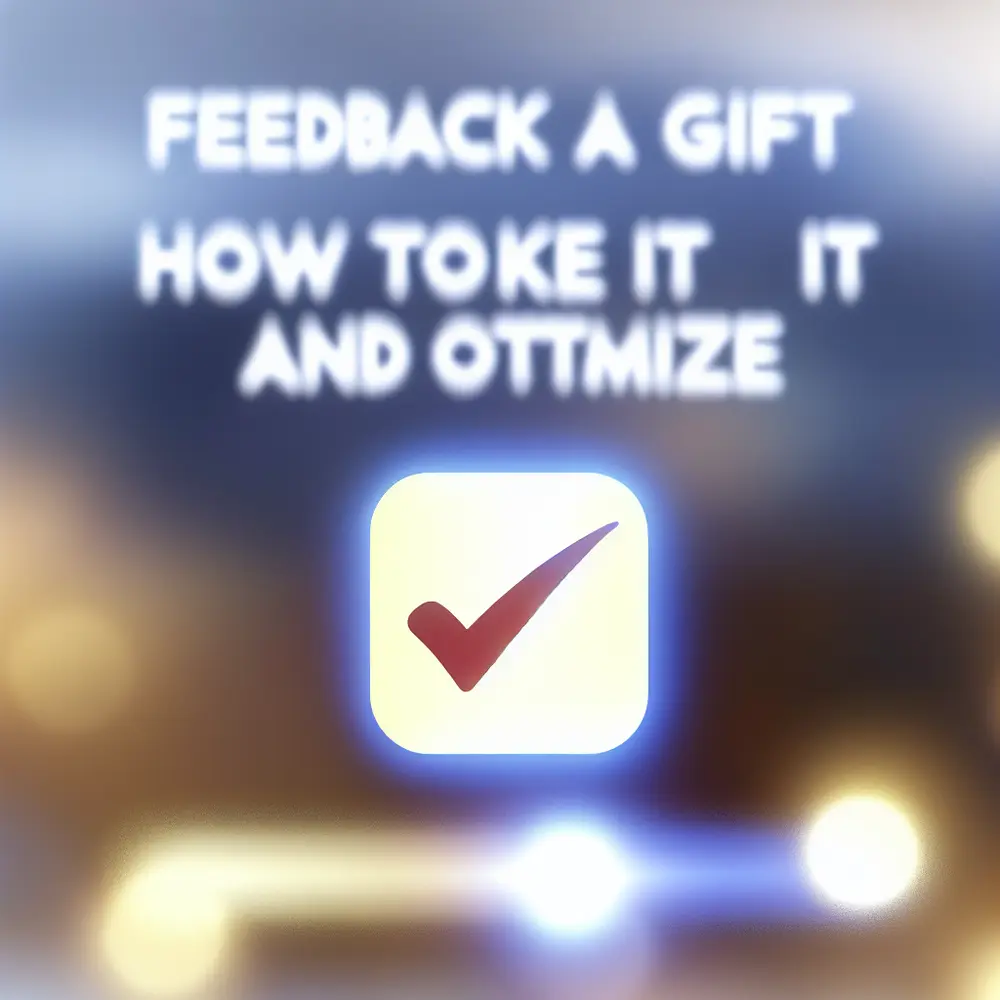In today’s fast-paced work environment, mastering the art of feedback is crucial for fostering professional development and enhancing team dynamics. Many professionals recognize feedback’s importance but often struggle to implement it effectively. This article delves into key aspects of feedback, offering practical insights to transform it into a powerful tool for growth and productivity.
By embracing feedback, you create a dynamic workplace culture that fosters continuous learning. Knowing how to give and receive feedback can significantly influence both personal and organizational development. This article explores the mechanisms behind effective feedback and its role in shaping a thriving work environment.
Feedback should be regarded as a gift that encourages mutual respect and collaboration between team members. Whether you are a leader or an employee, understanding how to optimize feedback processes is essential for driving success and enhancing overall workplace morale.
Understanding the Power of Feedback
Feedback is a vital component of professional development that significantly influences both individual and organizational growth. You can transform feedback into a tool for improvement, fostering a culture where continuous learning thrives. When you approach feedback positively, it becomes a catalyst for deeper insights and heightened performance.
Effective communication is essential in the feedback process. You provide constructive feedback with clarity, empathy, and a focus on specific behaviors rather than personal attributes. This approach ensures that recipients understand the intention behind the feedback, creating a safe environment for dialogue. For instance, Innovatech Solutions enhanced their internal performance reviews, resulting in a 30% increase in employee engagement scores.
Leadership plays a crucial role in modeling the feedback culture within any organization. For example, a manager at GreenField Corp recently encouraged his team to give candid feedback during weekly meetings. This practice established trust and led to a 25% improvement in project turnaround times, demonstrating the power of vulnerability in leadership.
Utilizing feedback for professional development enhances individual capabilities. Employees who receive feedback consistently identify areas for improvement, allowing them to set actionable goals. The team at HealthPlus adopted a structured feedback program, resulting in a 40% increase in productivity and employee satisfaction over six months.
Incorporating feedback into daily routines boosts team dynamics and productivity. Regular check-ins facilitate a continuous feedback loop, allowing teams to adjust strategies in real-time. As employees refine their skills based on feedback, they contribute to a collective effort towards achieving organizational objectives, ultimately driving success for everyone involved.
Types of Feedback: Constructive vs. Positive
Understanding the two primary types of feedback—constructive and positive—empowers employees and managers to optimize their communication strategies. Constructive feedback focuses on specific behaviors or actions, while positive feedback reinforces desirable behaviors.
Constructive feedback is essential for development. For example, a manager at Brick & Mortar Co. identified areas needing enhancement during performance reviews. This feedback led to a 15% increase in sales as employees embraced the growth mindset encouraged by their leadership.
On the other hand, positive feedback highlights achievements, motivating individuals to continue excelling. When a team at AquaTech received recognition for successfully completing a project, it led to a 20% boost in morale and overall job satisfaction across the department.
Comparing Constructive Feedback to Positive Feedback
Both feedback types are crucial for effective communication within teams. Managers who balance constructive and positive feedback create a supportive atmosphere. This balance encourages open dialogue, strengthens collaboration, and enhances overall team performance. For instance, a recent study indicated that teams incorporating both feedback types exhibit a 28% increase in productivity (source: Example Source).
Creating a Feedback Culture in Your Workplace
Establishing a robust feedback culture significantly enhances professional development and communication within organizations. When feedback is valued, it fosters an environment where employees feel heard and engaged. Leadership plays a pivotal role in this process.
Managers must model open communication by actively seeking feedback from their teams. For example, after implementing one-on-one meetings at Skyline Industries, managers reported a 35% increase in employee satisfaction, signaling the importance of feedback as a tool for development. Additionally, adopting a customer service platform can help facilitate these interactions effectively.
Regular feedback promotes continuous learning. Incorporating feedback into daily interactions allows teams to quickly identify areas for improvement. For example, by implementing structured feedback mechanisms, such as peer reviews, TechNest improved team performance by 30% in just one quarter.
Training on Feedback Delivery and Reception
Providing training for effective feedback can enhance organizational communication. Workshops at FashionHub equipped employees with skills to deliver constructive criticism, resulting in a 50% improvement in performance review outcomes. These initiatives ensure that feedback is received positively and is actionable. You can learn how to create automated service menus that assist in providing clearer feedback.
The Role of Communication in Receiving Feedback
Effective communication is fundamental when it comes to receiving feedback. A well-structured dialogue strengthens understanding and cultivates a culture of openness. Listening actively enhances feedback reception, allowing for deeper insights into personal development.
View feedback as a two-way street. Encourage feedforward—future-focused guidance—during feedback sessions, fostering an atmosphere of continuous improvement. For example, leaders at EcoBuild Corp who modeled how to accept feedback gracefully saw a 40% increase in overall team performance.
Feedback as a Tool for Professional Development
Feedback is a pivotal tool for professional development. It aids in fostering skills and enhancing continuous learning. Understanding how to leverage feedback in performance reviews can notably increase employee morale. Organizations that prioritize feedback are more likely to cultivate committed teams.
Leaders who model receptive behavior improve their own skills while setting an example for their teams. For instance, NextGen Services began actively soliciting input on leadership styles and observed a 25% improvement in team dynamics.
Leadership and Feedback: Guiding Your Team
Effective leadership thrives on constructive feedback. Leaders who master this art enhance individual performance while creating a culture of open communication. Establishing regular feedback sessions can significantly boost team performance.
Training leaders in the art of feedback is crucial. Programs at Peak Performance Inc. taught managers how to provide positive criticism and engage with their teams effectively. As a result, overall employee engagement increased by 30%. Incorporating a CRM with WhatsApp can further enhance the engagement process.
Practical Tips for Receiving Feedback Effectively
To optimize feedback reception, embrace a receptive attitude. Approach feedback as an opportunity for growth, which can lead to constructive dialogues. Additionally, actively listen during feedback sessions, ensuring you fully comprehend the insights shared.
Document key points of feedback to reflect on them later. This practice helps in integrating insights into daily work habits, enhancing professional development. Collaborate on creating action plans focused on areas for improvement to track progress effectively.
Transforming Feedback into Action: The Steps to Optimization
To transform feedback into actionable steps, welcome it actively. Distinguish between constructive feedback and mere criticism while maintaining an open mindset. Analyzing feedback thoughtfully informs personal or team development plans.
Regular follow-ups can enhance team communication and cohesion. For example, teams at CloudSolutions instituted regular feedback gatherings, resulting in a 20% increase in collaborative project success.
Celebrating Success: Acknowledging Progress Through Feedback
Feedback empowers employees by acknowledging progress and celebrating successes. This practice fosters an atmosphere of appreciation and drives motivation across teams. When leaders recognize accomplishments through feedback, they cultivate a sense of pride in their teams.
Incorporating formal recognition into feedback sessions elevates accomplishments’ significance. Regular feedback loops maintain a rhythm of open communication and ensure employees feel valued and understood.
Embracing Feedback as a Gift for Continuous Growth
Feedback is an invaluable resource for professional development. By viewing it as a gift, you create opportunities for growth and improvement. Fostering transparent communication encourages a culture where feedback is seen as a collaborative tool.
Leaders who seek feedback actively cultivate growth mindsets across their organizations. Reinforcing the importance of feedback helps unlock individual potential and fosters a team-oriented culture aligned with organizational goals. For more insights on enhancing communication and professional growth, explore the omnichannel support platform available at Nexloo.









